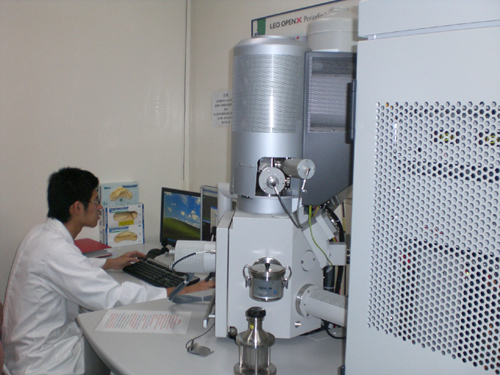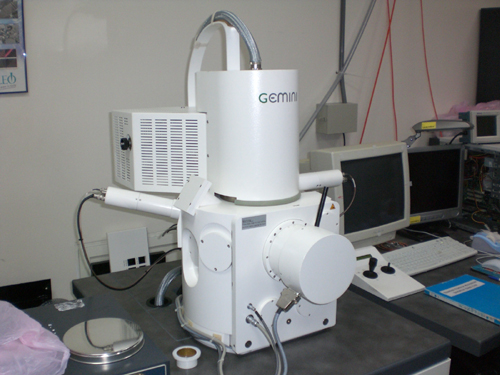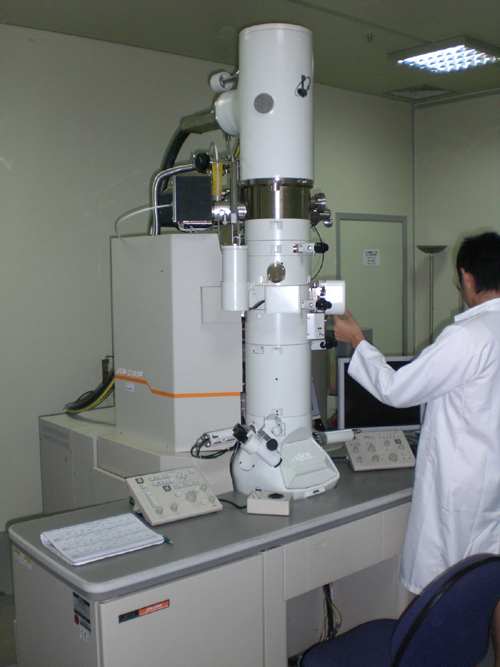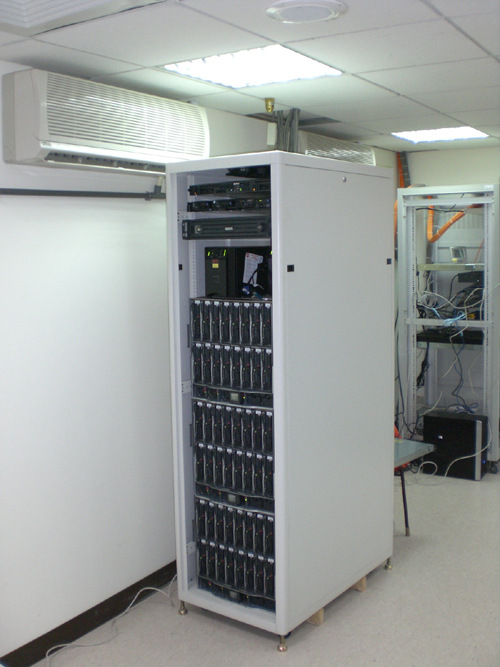|

Anton Paar SurPASS, made in German
Electro-Kinetic
Analyzer (EKA)
The instrument is used for measuring the zeta-potential of
bulk
materials. This zeta-potential is important to predict the
stability
if colloidal suspensions and the tendency to agglomerate.
the main body is about 2M and the total (including cells)
is about 2.7M


Brookhaven 90Plus/ZetaPALS, made in US
Dynamic Light Scattering (DLS)
http://www.bic.com/90Plus.html
http://www.bic.com/ZetaPALS.html
Based on the dynamic light scattering (DLS), this instrument
can be
used to determine the particle size and its zeta-potential.
Comparing
with the electro-kinetic analyzer (EKA) like the SurPASS,
this
instrument is mainly for nano materials. Comparing with observing
the
particle size directly with electron microscopes, DLS is quick
and
non-destructive.
this is about 2M


PHI VersaProbe XPS Microprobe, made in Japan
X-ray Photoelectron Spectrometry (XPS), a.k.a.
Electron Spectroscopy
for Chemical Analysis (ESCA)
In a ultra-high vacuum (UHV) chamber (1E-10 torr), photoelectrons
are
excited with X-ray. As the escape depth is shallow, the information
came from the top few nm. The is important in studying the
out-most
chemical composition and chemical structure of materials.
Combine the
the sputtering gun (Ar and/or C60), one can slowly remove
the surface
and profile the depth.
about 24M


FEI Nova200 NanoSEM, made in US
Scanning
Electron Microscope (SEM)
Using a electron beam, surface structure can be observed directly
with
non-conducting samples can also be observed with ~nm resolution.
Combine with the X-ray Energy Dispersive Spectroscopy (XEDS)
made by
EDAX
(US )
the chemical composition can also be determined.
the SEM itself is about 10M and 1.5M for other detectors.
EDAX is about 2M.


LEO 1530, made in US
This is similar to D but without low-vacuum mode and XEDS.
However,
it is converted to electron beam lithography (EBL) platform.
(I did not purches this one so that I am not sure about the
price - it
would be about 10M in total)


JEOL JEM-2100F, made in Japan
Transmission
Electron Microscope (TEM)
The high-resolution electron microscope (HREM) has a resolution
about
angstrom. Atomic arrangements can be observed directly with
this
instrument.
The system is about 20M in total.


HP Blade System, made in US
This is for high-performance computing. The main system consists
with
48 computing nodes. Each node has two dual-core 3GHz Woodcrest
CPU
and 4-16Gb memory.
7.5M

|